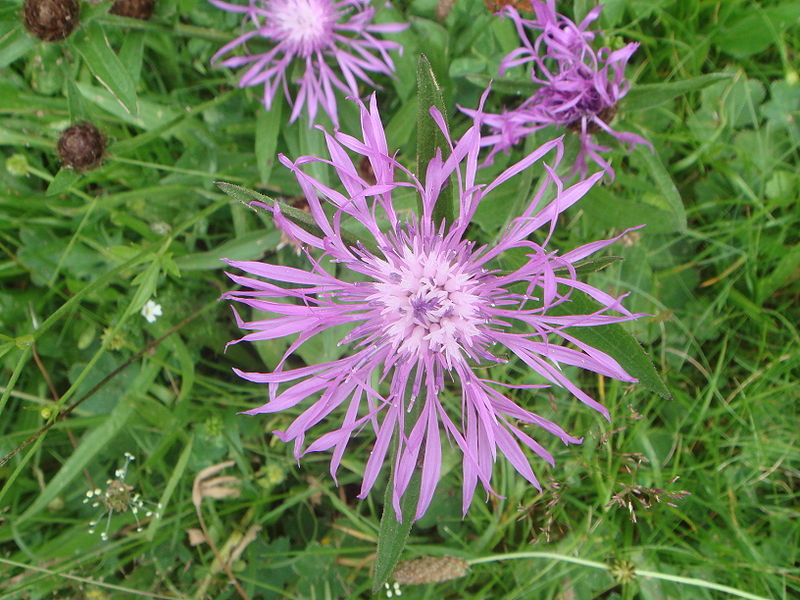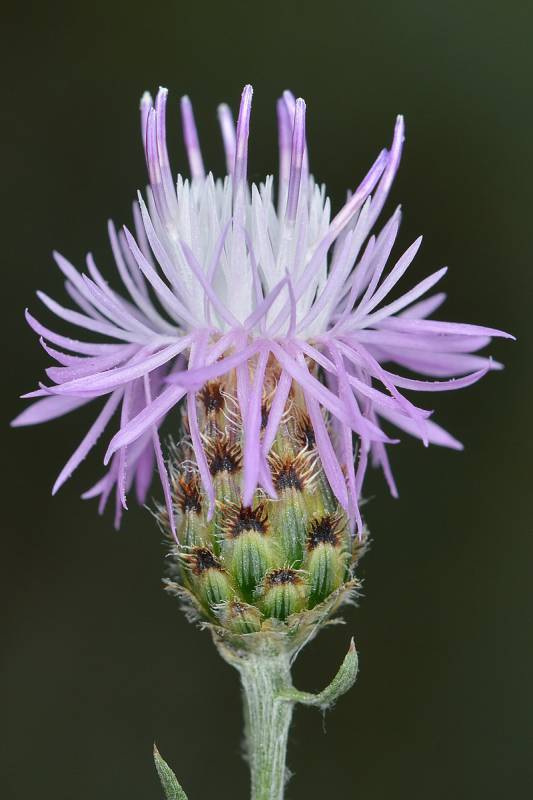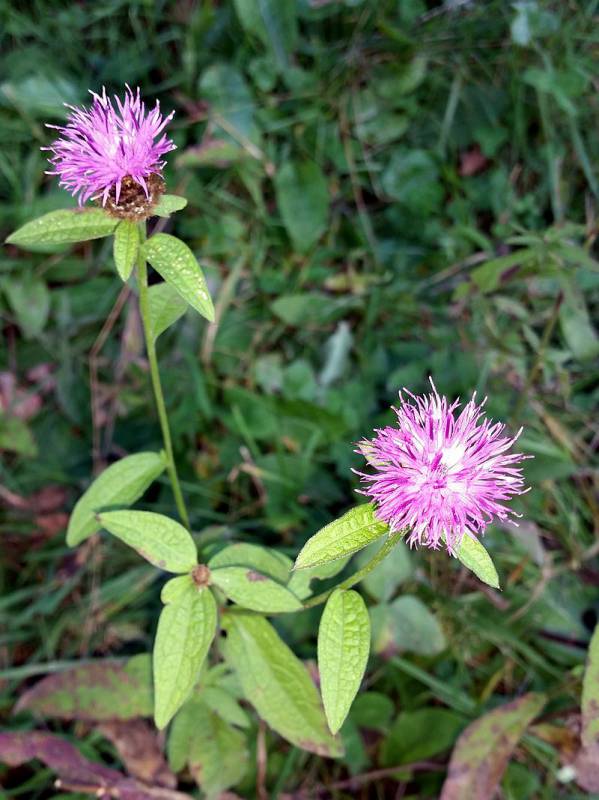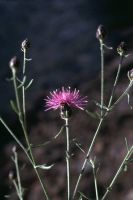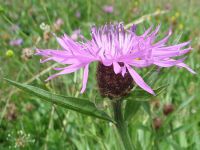Distribution: Occurring on both sides of the Cascades crest and in the Columbia River Gorge in Washington; British Columbia to California, east to Montana, also Great Lakes region east to northeastern North America.
Habitat: Roadsides, fields, meadows, wastelots, and other disturbed, open areas.
Flowers: July-September
Origin: Introduced from Europe
Growth Duration: Perennial
Conservation Status: Not of concern
Pollination: Bees, flies, beetles, wasps
Perennial 1-12 dm. high, covered throughout with fine, short hairs.
Leaves toothed to shallowly lobed to entire, the basal petiolate, lance-ovate to elliptic, the cauline reduced upwards and becoming sessile.
Heads terminating the rather numerous branches; involucre 12-18 mm. high, and a little broader than high; the middle and outer involucral bracts tipped with comb-like teeth that are black, and 2-3 times as long as they are wide; pappus 1 mm. long; receptacle densely bristly.
Publication: Sp. Pl. 2: 911. 1753.
PNW Herbaria: Specimen records of Centaurea nigra in the Consortium of Pacific Northwest Herbaria database
WA Flora Checklist: Centaurea nigra checklist entry
OregonFlora: Centaurea nigra information
E-Flora BC: Centaurea nigra atlas page
CalPhotos: Centaurea nigra photos

